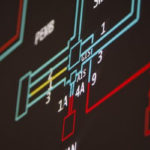 National Grid says the amount of flexibility from small generators, battery storage and demand side response used in the Balancing Mechanism has been boosted by a new ‘distributed resource’ desk launched this week.
National Grid says the amount of flexibility from small generators, battery storage and demand side response used in the Balancing Mechanism has been boosted by a new ‘distributed resource’ desk launched this week.
The desk is designed to deliver faster instructions. While starting from a small base, some 87MWh of bids and offers were accepted from aggregators in the first 24 hours of operation, up 113% on average, said the Electricity System Operator (ESO).
The ESO uses the Balancing Mechanism to balance supply and demand in real time. It was originally designed around large power stations but National Grid has described it as “the ultimate balancing market” and is working to open it up to all types of flexibility.
Two aggregators, Limejump and Flexitricity, have acquired supply licences which enable them to play in the Balancing Mechanism (BM) before wider reforms open it up to all flexibility providers. Currently, National Grid pays out about £350m a year to those that help it balance the system.
National Grid said Flexitricity and Limejump collectively have 52MW of power available within the BM. By April 2019, the ESO expects this volume to grow to 145MW. Claire Spedding, balancing programme director at the ESO, said the dedicated desk would enable greater expertise and understanding of how smaller assets can help balance the system.
Related stories:
Can the Balancing Mechanism offset FFR price erosion?
National Grid outlines plans to bring all flex providers into Balancing Mechanism
Flexitricity aims for supply licence, eyes BM prize
Limejump: Aggregators will need a supply licence to survive
Free 2018 demand-side response report
Follow us at @EnergystMedia. For regular bulletins, sign up for the free newsletter.



